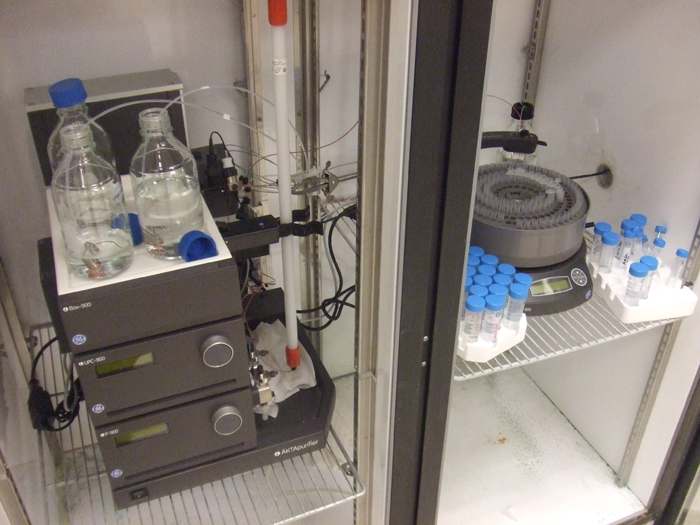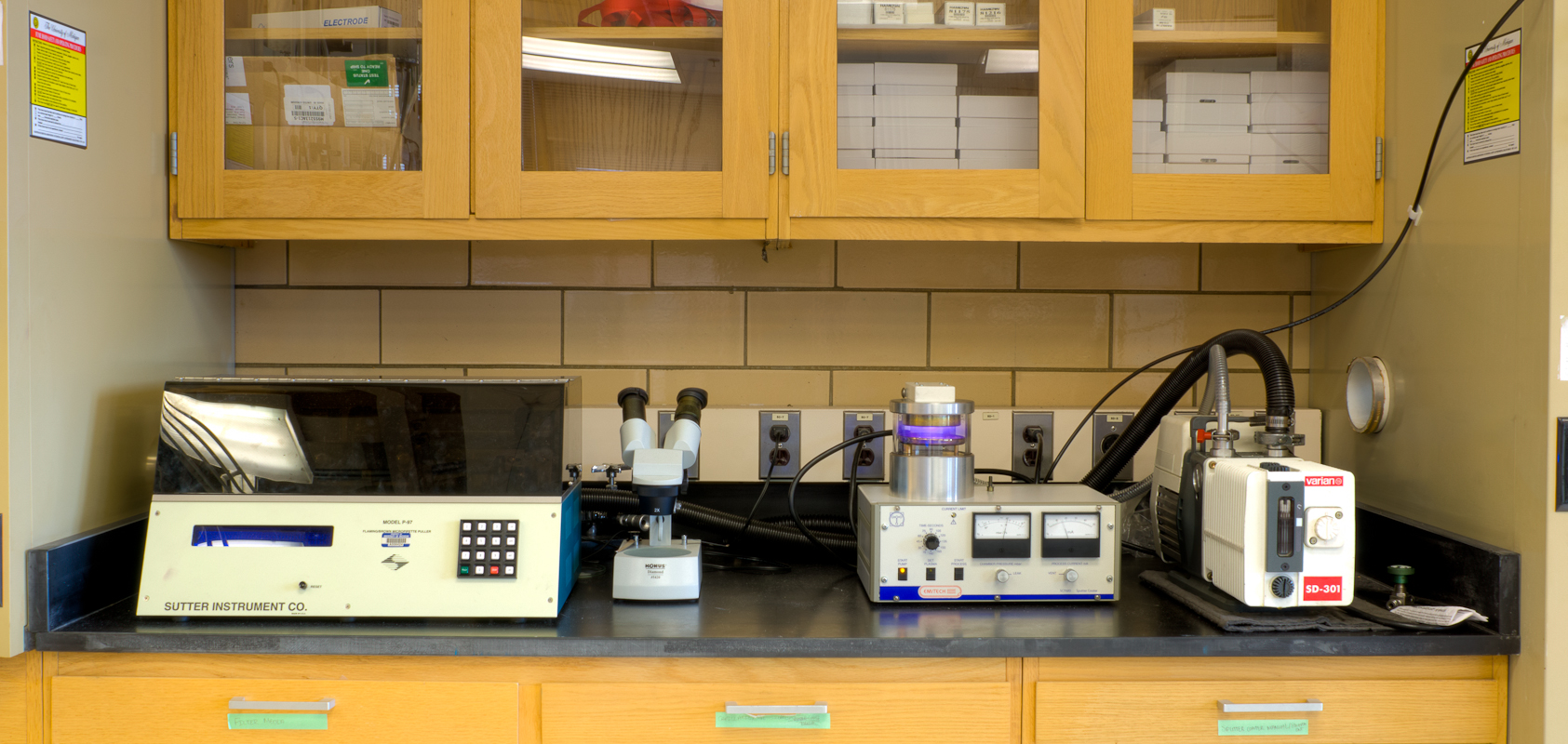GROUP INSTRUMENTATION.
Originally applied to problems in chemical physics, trace detection , and used for the analysis of small biomolecules for well over a decade, ion mobility spectrometry (IMS) separates ions based on their ability to traverse a chamber filled with inert neutral molecules under the influence of a weak electric field. In a process roughly analogous to a gas-phase version of electrophoretic separation in solution, ions that are large undergo a greater number of collisions with neutral molecules and thus take more time to elute from the chamber than smaller, more compact ions. Ion size in the form of an orientiationally-averaged collision cross-section (CCS) is, therefore, the primary information content of IM separation and computational approaches can be used in conjunction with this information to assign the overall topology and structure to the assembly. See our [publication list] for a more detailed description, or please visit the [links page] where you can find websites that contain detailed tutorials on IM theory and practice.

Our lab has dedicated IM instrumentation coupled to mass spectrometry in the form of the Synapt G2 instrument [Waters].
(A) A general schematic of the complete instrument indicating the four main regions of instrument operation: ion generation (using a nano-electropray ion source), ion selection (using a modified quadrupole mass analyzer capable of selecting ions up to 32,000 m/z), ion mobility separation (carried out in the tri-wave region described in detail in B), and ion mass analysis (using a time-of-flight mass analyzer capable of ~40,000 mass resolving power). (B) Detail is shown for the ion mobility separation, or tri-wave, region of the instrument. Three major traveling-wave (T-wave) ion guides dominate this section of the instrument, and include the ion trap (blue), ion mobility (purple), and the transfer (light red) regions. A fourth pressurized region is shown as the He cell (green), which facilitates the injections of ions across the pressure gradient that exists between the ion trap and the ion mobility regions with minimal ion activation. Typical mass flow controller values are also shown for the gas flow (in ml/min) into each enclosed region of the instrument
 LCT High-accuracy, high-resolution ion mobility measurements enable a vast array of important contemporary applications in biological chemistry. With the recent advent of both new, widely available commercial instrumentation and also new calibration datasets tailored for the aforementioned commercial instrumentation, the possibilities for extending such high performance measurements to a diverse set of applications has never been greater. We have recently assessed the performance characteristics of a second-generation travelling-wave ion mobility separator (Synapt G2), focusing on those figures of merit that lead to making measurements of collision cross-section having both high precision and high accuracy. Through performing a comprehensive survey of instrument parameters and settings, we construct trends for drift time resolution, CCS resolution, and CCS accuracy for a range of peptide, protein and multi-protein complex ions. The data shown is a contour plot charting the influence of two critical instrumental parameters: wave amplitude (or height) and wave velocity and on the traveling wave ion mobility resolution (indicated on a color scale, R_TW^t) for the SDGRG pentapeptide at 4 mBar pressure in the IM separator. Data has been collected for proteins and their complexes and show similar trends.
LCT High-accuracy, high-resolution ion mobility measurements enable a vast array of important contemporary applications in biological chemistry. With the recent advent of both new, widely available commercial instrumentation and also new calibration datasets tailored for the aforementioned commercial instrumentation, the possibilities for extending such high performance measurements to a diverse set of applications has never been greater. We have recently assessed the performance characteristics of a second-generation travelling-wave ion mobility separator (Synapt G2), focusing on those figures of merit that lead to making measurements of collision cross-section having both high precision and high accuracy. Through performing a comprehensive survey of instrument parameters and settings, we construct trends for drift time resolution, CCS resolution, and CCS accuracy for a range of peptide, protein and multi-protein complex ions. The data shown is a contour plot charting the influence of two critical instrumental parameters: wave amplitude (or height) and wave velocity and on the traveling wave ion mobility resolution (indicated on a color scale, R_TW^t) for the SDGRG pentapeptide at 4 mBar pressure in the IM separator. Data has been collected for proteins and their complexes and show similar trends.
LCT Premiere, nano-electrospray orthogonal time-of-flight mass spectrometer.
Akta purifier UPC 10, size exclusion chromatography system.
Advion TriVersa Nanomate, automated sampler.







